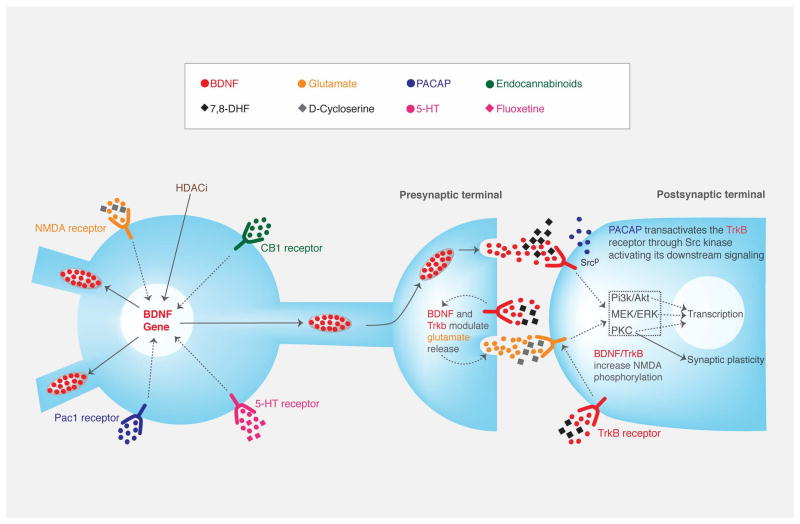Figure 1.
Simplified schematic diagram of BDNF modulators acting at the synaptic level during fear extinction processes. NMDA receptor, HDACi, CB1 receptor, 5-HT receptor and Pac1 receptor activation lead to epigenetic BDNF gene changes which affect BDNF synthesis. At a presynaptic level, BDNF is released from vesicles and its binding of the postsynaptic TrkB receptor leads to autophosphorylation. This causes activation of downstream signaling pathways (Pi3K/Akt, MEK/ERK and PKC), leading to gene transcription changes and synaptic plasticity. In addition, PACAP has been suggested to transactivate the TrkB receptor through Src and causing the activation of TrkB downstream signaling. Moreover, BDNF and TrkB modulate glutamate release and NMDA phosphorylation.

